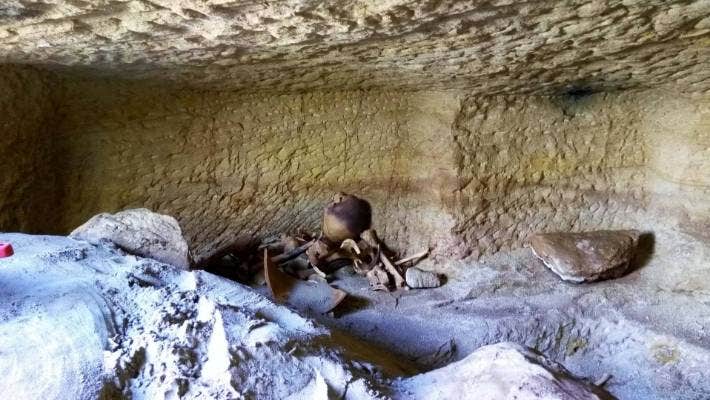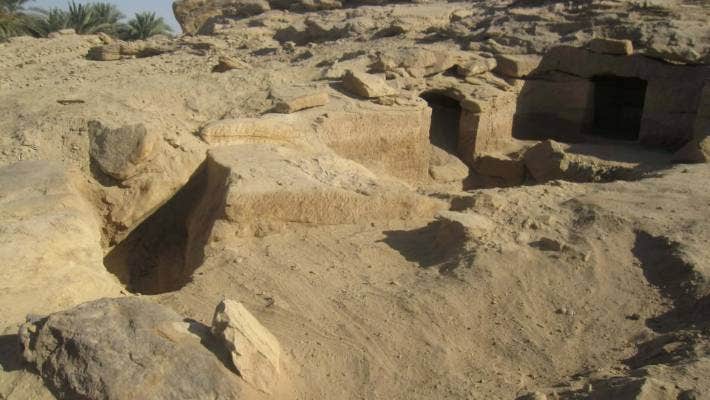Swedish archaeologists discover 12 ancient Egyptian cemeteries near Aswan
 HANDOUT/REUTERSSkeletal and animal remains are seen at one o f12 newly discovered ancient Egyptian cemeteries.
HANDOUT/REUTERSSkeletal and animal remains are seen at one o f12 newly discovered ancient Egyptian cemeteries.
Swedish archaeologists have unearthed a dozen burial sites near the southern city of Aswan that date back almost 3500 years to the New Kingdom era of ancient Egypt, the Antiquities Ministry said on Wednesday.
Human and animal remains were found in the cemeteries, which were discovered in the Gabal al-Silsila or Chain of Mountains area 65 km (40.3 miles) north of Aswan and would have been used during the reigns of pharaohs Thutmose III and Amenhotep II.
It is hoped the burial sites will help historians better understand ancient Egyptian healthcare and give a boost to Egypt’s struggling tourism industry, which has been beset by political upheaval and militant attacks since the unseating of autocrat Hosni Mubarak in 2011.

REUTERSAn Egyptian pharaonic scarab is pictured at the site of one of dozen newly discovered ancient Egyptian cemeteries dating back to the New Kingdom era.
Some of the cemeteries were for animals and contain one or two chambers with either stone or clay coffins, or ones made of cartonnage, Mahmoud Afify, the ministry’s head of Ancient Egyptian Antiquities, said in a statement. Totems and scorpions were also found.
 HANDOUT/REUTERSOne of 12 newly discovered ancient Egyptian cemeteries at Gabal al-Silsila or Chain of Mountains area in Upper Egypt.
HANDOUT/REUTERSOne of 12 newly discovered ancient Egyptian cemeteries at Gabal al-Silsila or Chain of Mountains area in Upper Egypt.
The expedition from Sweden’s Lund University began in 2012. In 2015 it discovered the remains of an ancient temple also in Gabal al-Silsila.
Initial examinations revealed several complete bodies as well as evidence of malnutrition and broken bones that were the result of heavy labor, the ministry quoted expedition head Maria Nilsson as saying.
Further studies are expected to reveal the social rankings of those buried there and what exactly what purpose the uncovered cemeteries served.
Related Post
A shocking documentary proves that mermaids do exist
SHOCKING Revelation: Thuya, Mother of Queen Tiye, Was the Grandmother of Akhenaten and Tutankhamun—What Ancient Egyptian Secrets Did She Leave Behind?
Breaking News: Astonishing Discoveries at Karahan Tepe Confirm an Extraterrestrial Civilization is Hiding on Earth, and NO ONE Knows!
Breaking News: Researchers FINALLY Discover U.S. Navy Flight 19 After 75 Years Lost in the Bermuda Triangle!
NASA’s Secret Investigation: Uncovering the Astonishing Mystery of the UFO Crash on the Mountain!
Explosive UFO Docs LEAKED: Startling Proof That Aliens Ruled Ancient Egypt!